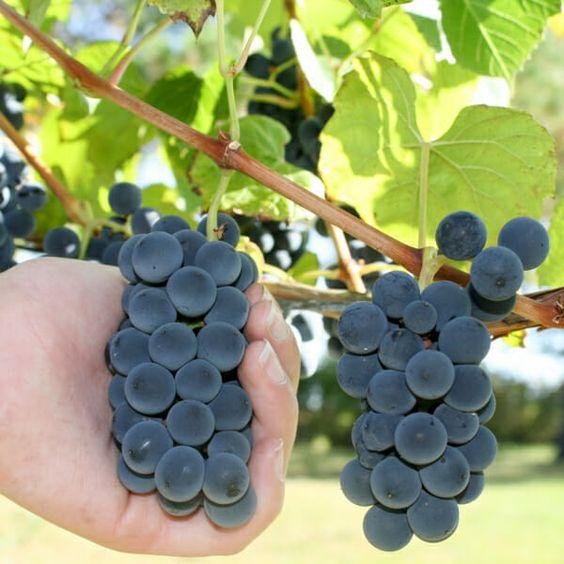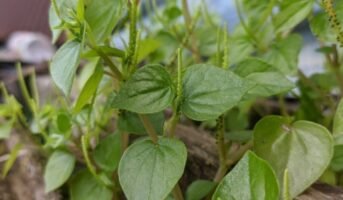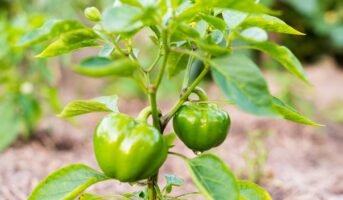The juicy and tangy grapes (Vitis Vinifera) are nature’s loveliest candies. Green lovers all across the country may once have dreamed of building a grapes garden at home. If you aspire to grow lush green grape vines, you are just where you should be. Our detailed grape-cultivation guide will help you know more about these juicy fruits and how to grow, care and keep them healthy always.
See also: What are Sabja seeds and how beneficial they are for you?
Grapes: Key facts
| Common name | Grapes |
| Scientific name | Vitis vinifera |
| Varieties |
|
| Growing conditions |
|
| Best time to grow | February-March for North India, October-January for Southern regions |
| Harvesting time | March-August |
See also: Black Plum
Grape plant: Varieties
It depends on your location and weather conditions. If you are in Northern India, the Sultana or Thompson Seedless can be your choice variety. The Anab-e-Shahi or white-seeded bhokri was originally cultivated in Andhra Pradesh, but now these are also grown in parts of Haryana, Punjab and Tamil Nadu. As the name suggests, Bangalore blue is mostly grown in Karnataka and neighbouring states. These are a delicacy of the state and are also used to prepare jams and jellies. The Perlette grapes (a variety of white seedless) are grown in North India and used to prepare local wines, shades and raisins.
See also about: Small home gardens
Grapes plant: How to grow?
You can either buy seeds or get saplings or cuttings from a nearby nursery. However, if you sow seeds, your grape garden may take even six years to develop and bear fruits. The best idea, hence, is to get cuttings or saplings for your grapevine. You can even grow grapes in containers if you lack space. Or, you can grow it on the terrace, which will also enhance the aesthetic value of the place and give you a natural canopy to sit, relax and rejuvenate.
The grape tree or vine requires a lot of care to develop into a lush green garden. But if you are ready to dedicate that time and energy, the fruits will be worth all your efforts. First of all, you should set the plant properly with the help of strong logs or bamboo sticks. As it is a vine, the mature plant can spread out drastically and even stoop under the weight of developed branches and fruits. Additional support may be required at the time of fruiting.

Source: Pinterest
The best place to grow your grape tree is somewhere bright and sunny. The terrace can be the best option for building an indoor grapevine. If you do not even have that luxury of a terrace, no worries! Get a container that is 18-20 inches deep and wide, and light-coloured. Do not opt for dark-coloured plastic pots, as they heat up pretty fast and may dry out the roots of the tender plant.
Wood barrels, ceramic containers, or a plant caddy are the best options for growing your grape plant without much hassle. Now, move the container to a spot that gets at least 5-8 hours of sun per day and proper air circulation.
Can grapes be grown in containers?
When you’re short on space, you have the option to cultivate a grapevine in a spacious container and train it to grow as a standard plant. This involves maintaining a single main stem and shaping the upper part into a rounded head, resembling a lollipop. To accommodate the grapevine, select a pot that measures approximately 30-38 cm in width and depth, and fill it with soil-based compost. During the growing season, you may choose to keep the container in a conservatory or greenhouse if necessary. However, it’s important to move it outdoors in winter to expose it to cold temperatures, as the grapevine requires a dormant period.
Grape plant: Care tips
Check out these tips to maintain grape vines in your home garden.
Grapes: Sunlight requirements
Grapes thrive in full sun throughout the day, regardless of the region. They require ample heat to ensure proper ripening of the fruit. It’s crucial to ensure that the foliage of the grapevine doesn’t obstruct any incoming light, as it plays a vital role in the growth and development of the grapes.
Grapes: Soil requirements
Grapes best grow in a well-draining, sandy-loamy soil mix. The pH should range from 6.5-8.5, and add 10% calcium carbonate and 20% concentrated lime for maximum results.
Grapes: Temperature and humidity requirements
The optimal temperature range for growing grapes is between 77ºF and 90ºF (25ºC to 32ºC). Temperatures below 77ºF (25ºC) can hinder the fruit’s growth. Grapes thrive in moderate humidity conditions. Excessively high or low humidity levels can negatively affect the growth of grape plants and the production of fruits.
Grapes: Watering requirements
Watering for grape plants depends on a lot of factors, from rainfall to general weather conditions. Feel the topsoil before watering the vines. If it feels dry, do ahead, but if it doesn’t, you may skip watering for a few days. Again, in monsoons, you need not water regularly. And during the fruiting time also, watering should be infrequent as it helps more yields. High humidity is preferred during the fruiting time as well.
Grapes: Fertiliser requirements
Feed a high-quality 10-10-10 fertiliser blend to the young vines, as it will give the plant all the nutrients it needs for maximum growth and yield. If you are into DIY fertilisers, feeding “jeevamrutha” or a mixture of cow urine, cow dung, gram flour + mud, jaggery and water will fulfil the plant’s entire nutrient needs.
Grapes: Pruning

Source: Pinterest
The grapes plant is a climber; hence, regular pruning is necessary to keep it in place and enhance growth. Otherwise, the fruits may get deprived of water and nutrients. Just cut off the long, non-flowering vines in winter, as it is the time when the plant is actually into hibernation.
Grapes: Pests and diseases
The grape vines are susceptible to infestations from wasps, flea beetles, thrips and mildew. Spraying neem oil solution over the vines occasionally will help keep these at bay. Also, mixing cow urine with water at a 1:10 ratio and spraying over the plant may actually save it from most fungal and bacterial infections. Besides, keeping the plant in areas with maximum sun and wind will invariably prevent such diseases.

Source: Pinterest
Grape plant: Harvesting
Feel the fruits. Once they are plump, appear juicy and can be easily plucked, go ahead and fill your buckets. The unripe grapes appear harder and smaller. Also, the stems and seeds turn somewhat brownish when the fruits are ready to be plucked. In most areas, the harvesting time is late August- November.
Grapes plant: Uses
- Promotes heart health
- Anticancerous effects
- Lowers blood sugar
- Improves bone health
- Promotes vision
- Improves memory, focus and concentration
- Used to make jams, fruit concentrates, juices and wines.
FAQs
How to prevent birds from eating fruits?
Cover the grapes with a thin net to keep the birds away. As the fruits are extremely sweet, this is a natural phenomenon when they ripen. It also notifies you that the fruits are ready.
What type of climate is ideal for growing grapes?
The Mediterranean climate is best-suited for most varieties of grape trees.
Is cow dung necessary to fertilise the crop?
Yes! According to expert gardeners, cow dung slurry should be fed to the vines to encourage maximum growth and yield.
What kind of grapes is best for making wine?
The Bangalore blue is considered the best variety for preparing delectable wine.
What good is lime or wood ash for grapes?
It helps reduce the acidity of the soil, as grapes thrive in the alkaline soil mix. Also, it fulfils the plant’s requirement for potassium.
Housing News Desk is the news desk of leading online real estate portal, Housing.com. Housing News Desk focuses on a variety of topics such as real estate laws, taxes, current news, property trends, home loans, rentals, décor, green homes, home improvement, etc. The main objective of the news desk, is to cover the real estate sector from the perspective of providing information that is useful to the end-user.
Facebook: https://www.facebook.com/housing.com/
Twitter: https://twitter.com/Housing
Email: [email protected]











